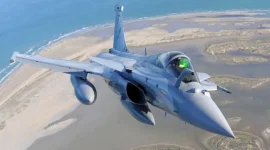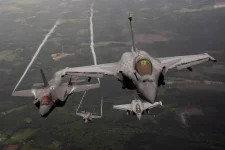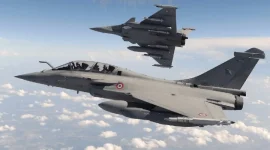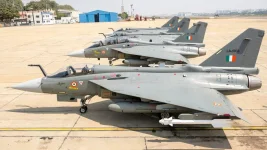- Views: 4K
- Replies: 9
The Indian Air Force (IAF) is reportedly advocating strongly for access to the source codes for key systems within its fleet of Dassault Rafale fighter jets, according to defence sources.
This strategic push aims to allow India greater control over integrating its domestically developed weapons onto the advanced aircraft, thereby boosting operational independence and reducing reliance on foreign manufacturers for future upgrades.
India has acquired a full fleet of 36 Rafale jets, which operate from bases including Ambala and Hasimara. While the French manufacturer, Dassault Aviation, has been collaborating with India to integrate specific weapons, such as the Astra Mk1 beyond-visual-range air-to-air missile (BVRAAM) and the Smart Anti-Airfield Weapon (SAAW), control over essential source codes remains with Dassault.
These codes are critical for the Rafale's advanced Active Electronically Scanned Array (AESA) radar and its complex Modular Mission Computer (MMC), which functions as the aircraft's electronic brain.
The IAF's current position is heavily influenced by its extensive experience operating the Dassault Mirage-2000 fleet since the 1980s. Despite nearly four decades of service and significant upgrades to some of these aircraft, the IAF never obtained the source code for the Mirage's mission computer. This limitation historically hindered the seamless integration of India's own emerging weapon systems onto the platform.
An IAF official highlighted the changing landscape, noting that while few indigenous weapons were available during the Mirage-2000's early years, India's Defence Research and Development Organisation (DRDO) and the IAF are now developing numerous advanced air-launched systems.
"There is a pressing need to integrate these into all fighter fleets to maintain commonality and meet operational requirements," the sentiment reflects. Relying on foreign vendors for integration often involves substantial costs and time delays, potentially affecting the force's preparedness.
This initiative aligns with India's broader 'Atmanirbhar Bharat' policy promoting self-reliance, particularly in the defence sector.
The IAF operates a diverse range of fighter aircraft, including the Sukhoi Su-30 MKI and the indigenous Tejas Light Combat Aircraft (LCA), which are increasingly being equipped with Indian systems like the Astra missiles, the Rudram anti-radiation missile, the air-launched BrahMos cruise missile, and the SAAW.
Equipping different aircraft types with the same weapons simplifies logistics, streamlines pilot training, and enhances overall operational flexibility – crucial advantages given India's complex security environment.
However, fitting these advanced Indian weapons onto the Rafale necessitates modifications to the software governing the AESA radar and MMC. Currently, this process depends entirely on Dassault due to the proprietary nature of the source code.
While cooperation on Astra and SAAW integration exists, the IAF seeks the capability to manage future integrations independently. Gaining access to the source code would empower Indian defence scientists and engineers to develop, test, and certify software updates in-house, potentially speeding up deployment and reducing long-term costs.
Understandably, this request presents challenges for Dassault Aviation. Source codes for cutting-edge systems like the AESA radar and MMC represent highly valuable intellectual property, developed through significant investment.
Sharing this sensitive information carries commercial risks and security concerns related to potential espionage or cyber threats that could compromise Dassault's global competitiveness.
Dassault may point to its ongoing cooperation on integrating specific Indian weapons as evidence of its commitment to meeting IAF requirements without handing over complete source code access.
As discussions potentially continue, alternative solutions might be explored, such as providing restricted software development kits (SDKs) or establishing collaborative Indo-French teams dedicated to weapon integration tasks, balancing the IAF's need for autonomy with the protection of sensitive technology.




